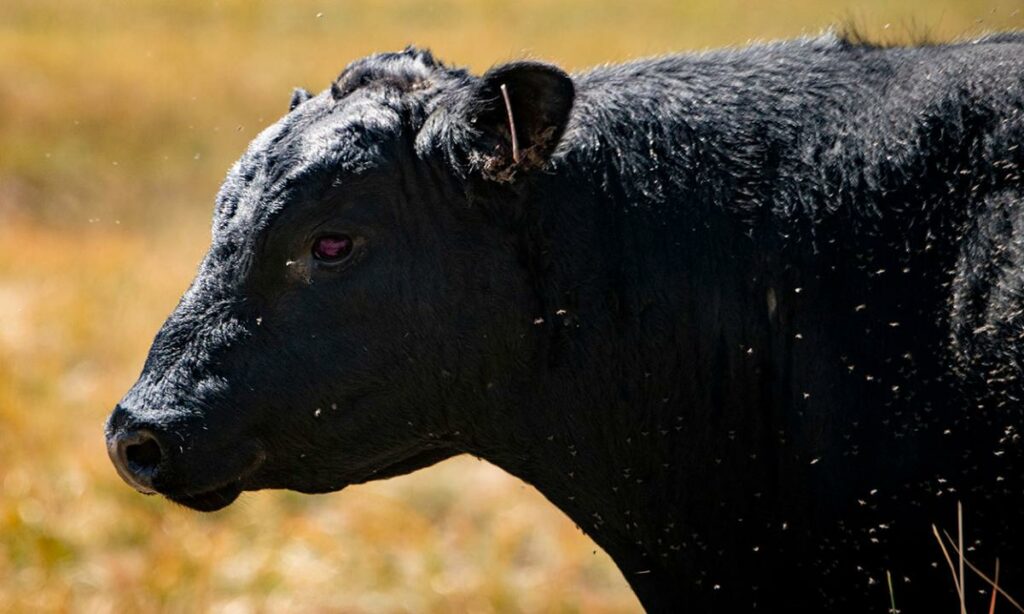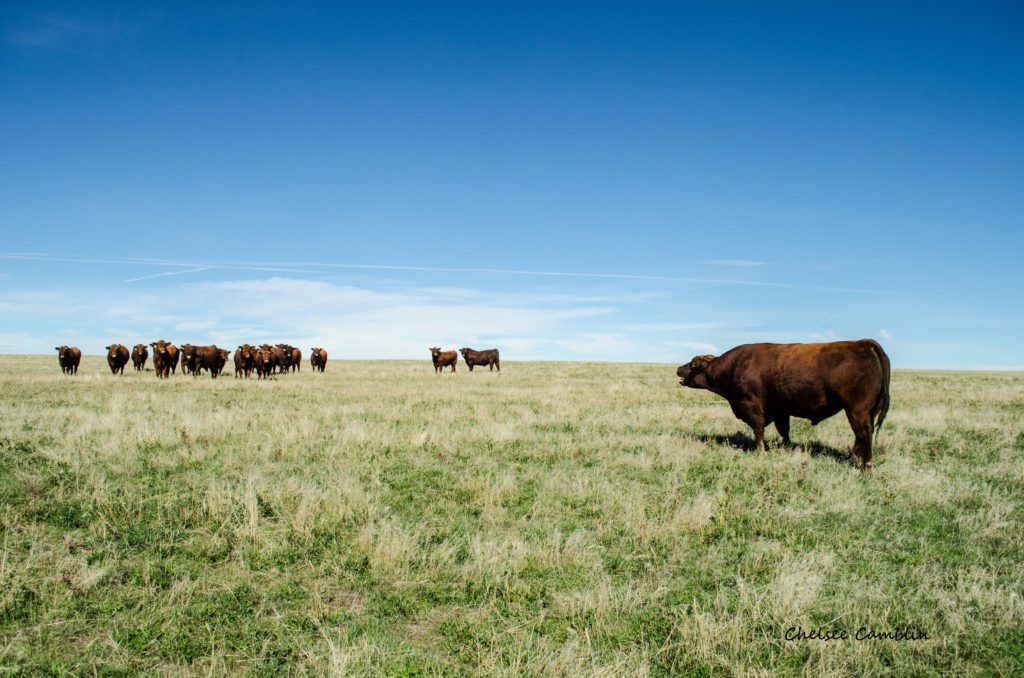Green grass and summertime are upon us in South Dakota. That means pairs are headed to pasture for the summer. That also means fly season is upon us.
Every year, discussions about controlling flies in herds are held everywhere, from the sale barn to social media platforms. These are important conversations, as bad fly conditions have a detrimental economic effect on the herd.
Pinkeye is one visual effect. It is also something producers disregard because “it’s not hurting the meat.” However, it could hurt profits.
Investigating Sale Barn Prices
During the past two calf marketing seasons, SDSU Extension staff have collected sale barn data across the state for a research project. While pinkeye was not the focus of this effort, it stuck out as a problem as calves came through the ring.
Table 1 lists the prices received for calves without an eye issue and their herd mates sorted out for eye issues. The eye issues could have been anything from a spot in a healed eye, blue eye, still infected, to blindness.
| Herd | Count | Weight | Price/CWT | Total | Difference |
|---|---|---|---|---|---|
| 1 | 111 | 751 | $ 206.75 | $ 1,552.69 | 100% |
| 1P | 5 | 744 | $ 142.00 | $ 1,056.48 | 68% |
| 2 | 3 | 360 | $ 216.00 | $ 777.60 | 100% |
| 2P | 1 | 360 | $ 165.00 | $ 594.00 | 76% |
| 3 | 67 | 386 | $ 209.00 | $ 806.74 | 100% |
| 3P | 1 | 680 | $ 150.00 | $ 456.25 | 57% |
| 4 | 34 | 571 | $ 170.25 | $ 972.13 | 100% |
| 4P | 1 | 535 | $ 117.50 | $ 628.63 | 65% |
| 5 | 37 | 318 | $ 208.00 | $ 661.44 | 100% |
| 5P1 | 9 | 309 | $ 40.00 | $ 123.60 | 19% |
| 5P2 | 13 | 312 | $ 37.50 | $ 117.00 | 18% |
| 6 | 36 | 599 | $ 165.00 | $ 988.35 | 100% |
| 6P | 1 | 575 | $ 124.00 | $ 713.00 | 72% |
*Actual numbers from South Dakota sale barns collected in 2022 and 2023.
P Herd segments with eye issues.
Interpreting the Data
No statistical analysis of the relative price difference has been done. However, for many operations, receiving 57% to 76% of the total value of the animal is enough to make the difference significant. Herd 5 was an outlier, with similar sex and weighted animals with an eye issue generating 18% to 19% of the value of their non-eye issue herd mates.
There are assumptions to be made based on the total number of calves in a herd, the percentage of calves infected with an eye issue, the number that healed up, and other variables that were not addressed here. However, anecdotally, producers with mild to severe eye infections had smaller checks at the end of the day compared to the check they would have received if all the calves had been healthy.
For example, Herd 1’s calf check for the animals listed was $177,631.00 compared to the $180,112.00 check it could have been if all the calves had fit into one 116-head lot and sold for $206.75/cwt.
The Bottom Line
Control and treatment options are available. Talk to your vet about these options. Evaluate the economic considerations, welfare issues, performance changes, and logistics issues. Make the best decision for you.
Additional Resources
The Different Sides of Pinkeye Treatment
Springtime Vaccines: Tools For Healthy Summer Calves
The Environmental Disease Called Pinkeye
Fly Control Considerations for Cattle on Pasture
Source: South Dakota State University Extension, Heather Gessner, SDSU Extension Livestock Business Management Field Specialist
Photo: U.S. Department of Agriculture









